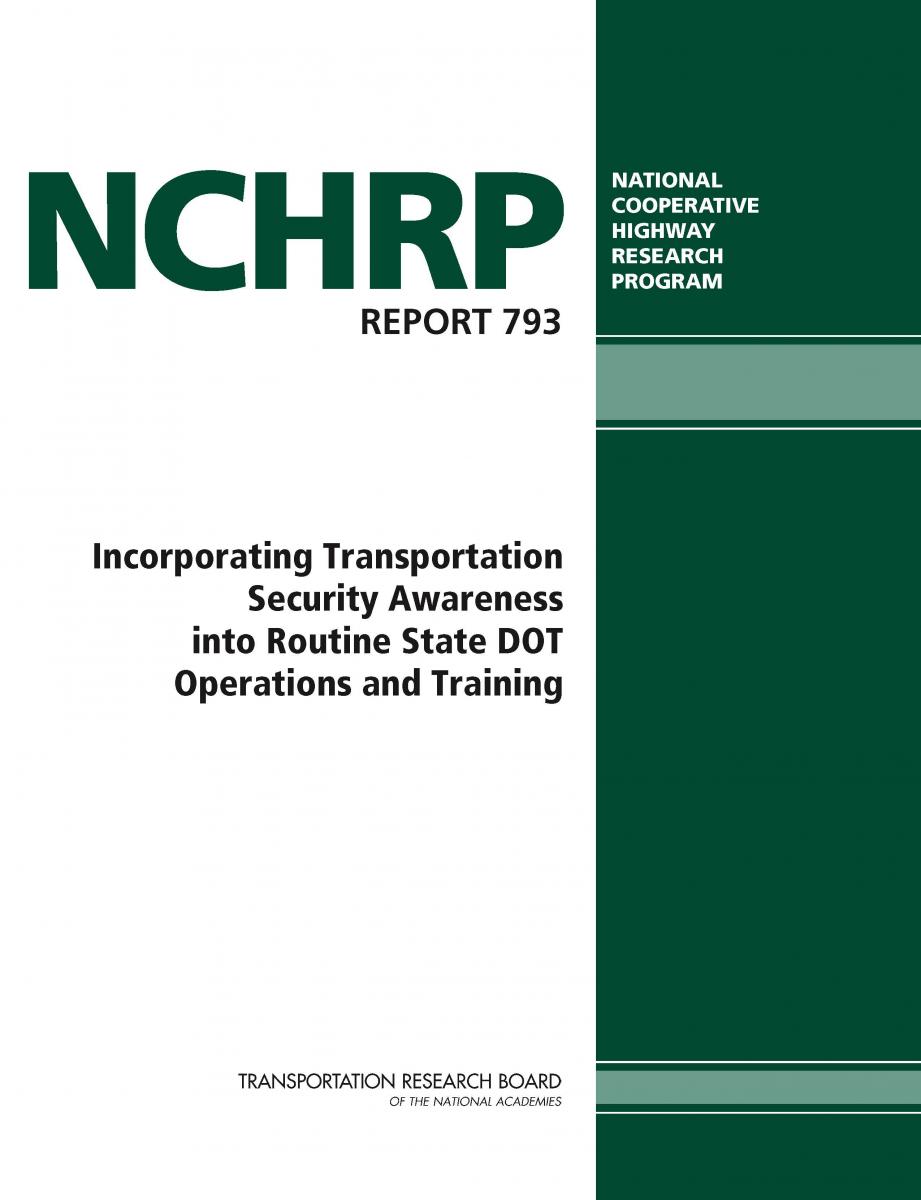Overview
 This report highlights the importance of security awareness for all state DOT employees and contractors. The report outlines a flexible “campaign” approach providing techniques to integrate all-hazards security awareness concepts and reminders into routine state DOT operations, maintenance, and training.
This report highlights the importance of security awareness for all state DOT employees and contractors. The report outlines a flexible “campaign” approach providing techniques to integrate all-hazards security awareness concepts and reminders into routine state DOT operations, maintenance, and training.
In most states, accountability for security may reside in state emergency management or homeland security organizations. Because of this, the perception by many state DOTs and DOT employees is “security is not DOT business.” Though state DOTs might not be directly responsible for patrolling state-owned infrastructure, DOTs do have the responsibility for controlling access to critical components, establishing coordination with law enforcement to ensure quick response to incidents, conducting infrastructure risk and vulnerability assessments, and taking action to mitigate the effects of those risks and vulnerabilities. As a result, state DOTs do play a significant role in infrastructure security.
Section 1 provides a brief introduction to transportation security and the current role of the state DOTs in security. Security awareness is defined and differentiated from security training. The section also presents the importance of security awareness for all transportation executives, employees, and contractors. Section 2 addresses issues of organizational readiness and includes five key “Questions to Ask” to ensure that an agency is ready to have and support an effective security awareness program. Section 3 identifies the core components of a security awareness campaign, utilizing examples from current practices. The section includes general messages for all employees and suggested messages and delivery methods for operations and maintenance staff. Section 4 provides methods for promoting security awareness within a state DOT that can be relatively inexpensive to implement. Additional material is provided in the Appendices: an overview of current training available with links to training resources and training courses, a contact list for training organizations, and a directory of resources relevant to transportation security.